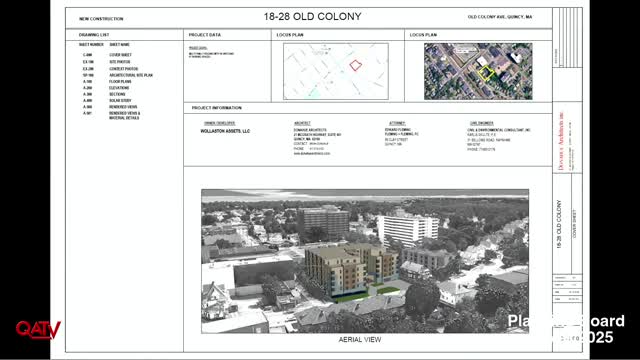Traffic study reveals impacts of new multifamily development on local neighborhood
March 20, 2025 | Quincy City, Norfolk County, Massachusetts
This article was created by AI summarizing key points discussed. AI makes mistakes, so for full details and context, please refer to the video of the full meeting. Please report any errors so we can fix them. Report an error »

In the heart of Quincy, city planners gathered to discuss the future of local development, focusing on a recent traffic study that could reshape the neighborhood's landscape. The meeting revealed critical insights into how new multifamily residences might impact traffic flow, a concern for both residents and city officials alike.
The traffic study, conducted for two proposed development sites, aimed to provide a comprehensive analysis of their potential effects on local traffic. The findings indicated that the new developments would generate an increase of 30 vehicle trips during the morning peak hours, with 23 vehicles exiting and 7 entering the area. In the evening, the projections rose to 37 trips, comprising 14 vehicles leaving and 23 arriving.
To ensure a thorough evaluation, the study took a conservative approach. It did not account for existing traffic from the current multifamily residences nearby, nor did it factor in the advantages of the developments' proximity to public transit options. This method aimed to present a clear picture of the potential traffic impact without the influence of external factors.
Interestingly, the study also assessed the current state of traffic at local intersections. Most intersections were functioning well, but one area of concern emerged: the intersection northbound approaching Old Colony at Beale Street. Previously equipped with a traffic signal, this intersection had transitioned to pedestrian-actuated crossings, raising questions about its effectiveness under the new traffic conditions.
As the meeting concluded, city planners and residents alike were left contemplating the balance between development and community needs. The traffic study not only highlighted the anticipated changes but also underscored the importance of ongoing dialogue about how to manage growth while ensuring safety and accessibility for all. The future of Quincy’s neighborhoods hangs in the balance, with careful planning and community engagement set to guide the way forward.
The traffic study, conducted for two proposed development sites, aimed to provide a comprehensive analysis of their potential effects on local traffic. The findings indicated that the new developments would generate an increase of 30 vehicle trips during the morning peak hours, with 23 vehicles exiting and 7 entering the area. In the evening, the projections rose to 37 trips, comprising 14 vehicles leaving and 23 arriving.
To ensure a thorough evaluation, the study took a conservative approach. It did not account for existing traffic from the current multifamily residences nearby, nor did it factor in the advantages of the developments' proximity to public transit options. This method aimed to present a clear picture of the potential traffic impact without the influence of external factors.
Interestingly, the study also assessed the current state of traffic at local intersections. Most intersections were functioning well, but one area of concern emerged: the intersection northbound approaching Old Colony at Beale Street. Previously equipped with a traffic signal, this intersection had transitioned to pedestrian-actuated crossings, raising questions about its effectiveness under the new traffic conditions.
As the meeting concluded, city planners and residents alike were left contemplating the balance between development and community needs. The traffic study not only highlighted the anticipated changes but also underscored the importance of ongoing dialogue about how to manage growth while ensuring safety and accessibility for all. The future of Quincy’s neighborhoods hangs in the balance, with careful planning and community engagement set to guide the way forward.
View full meeting
This article is based on a recent meeting—watch the full video and explore the complete transcript for deeper insights into the discussion.
View full meeting
